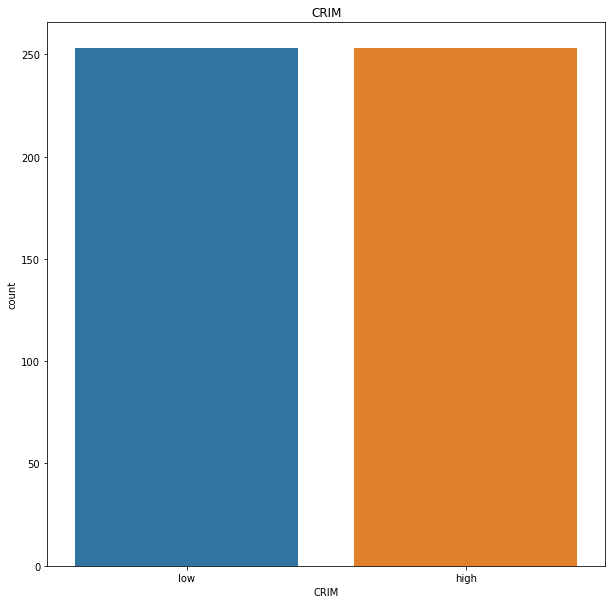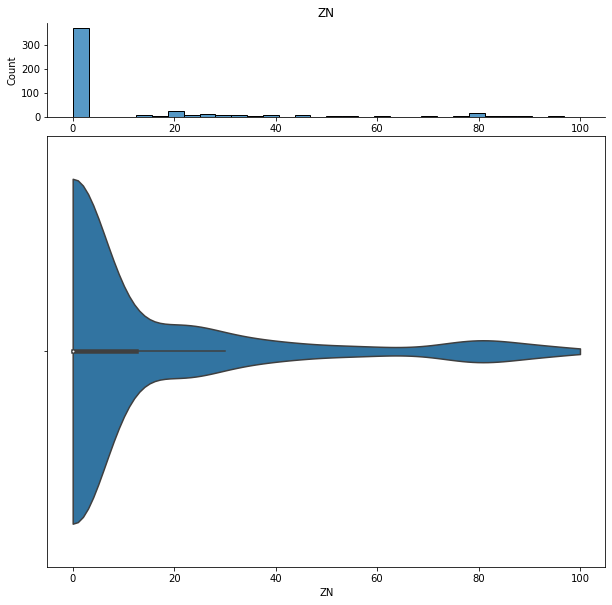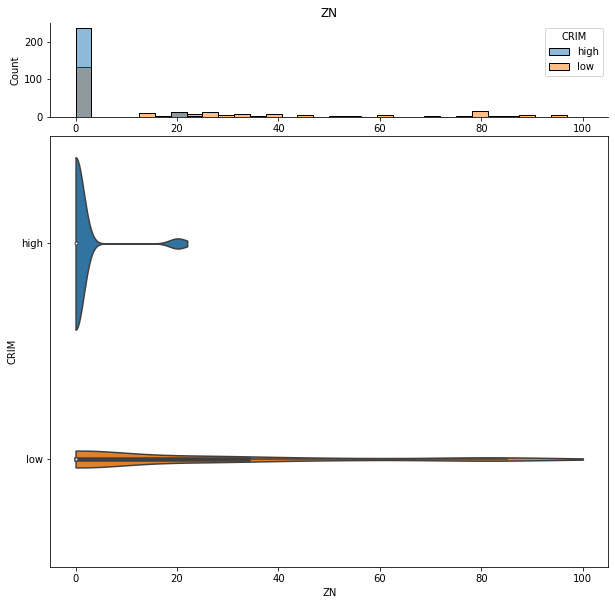Distributions¶
[1]:
import pandas as pd
import data_describe as dd
[2]:
from sklearn.datasets import load_boston
data = load_boston()
df = pd.DataFrame(data.data, columns=list(data.feature_names))
df['target'] = data.target
# Create categorical (bin) features to demonstrate count plots
df['AGE'] = df['AGE'].map(lambda x: "young" if x < 29 else "old")
df['CRIM'] = df['CRIM'].map(lambda x: "low" if x < df.CRIM.median() else "high")
[3]:
df.head(2)
[3]:
| CRIM | ZN | INDUS | CHAS | NOX | RM | AGE | DIS | RAD | TAX | PTRATIO | B | LSTAT | target | |
|---|---|---|---|---|---|---|---|---|---|---|---|---|---|---|
| 0 | low | 18.0 | 2.31 | 0.0 | 0.538 | 6.575 | old | 4.0900 | 1.0 | 296.0 | 15.3 | 396.9 | 4.98 | 24.0 |
| 1 | low | 0.0 | 7.07 | 0.0 | 0.469 | 6.421 | old | 4.9671 | 2.0 | 242.0 | 17.8 | 396.9 | 9.14 | 21.6 |
Diagnostic Summary¶
The default output summarizes diagnostics on the univariate data.
[4]:
dist = dd.distribution(df)
dist
Distribution Summary:
Skew detected in 1 columns.
Spikey histograms detected in 0 columns.
Use the method plot_distribution("column_name") to view plots for each feature.
Example:
dist = DistributionWidget(data)
dist.plot_distribution("column1")
None
[4]:
<data_describe.core.distributions.DistributionWidget at 0x1fa324be4c8>
Plot one feature¶
[5]:
dist.plot_distribution("CRIM")
[5]:

[6]:
dist.plot_distribution("ZN")
[6]:

[7]:
import seaborn as sns
sns.__version__
# sns.displot(df, x="ZN", hue="CRIM")
[7]:
'0.11.0'
[8]:
dist.plot_distribution("ZN", contrast="CRIM")
[8]:

Display diagnostic values¶
[9]:
dist.skew_value
[9]:
ZN 2.219063
INDUS 0.294146
CHAS 3.395799
NOX 0.727144
RM 0.402415
DIS 1.008779
RAD 1.001833
TAX 0.667968
PTRATIO -0.799945
B -2.881798
LSTAT 0.903771
target 1.104811
dtype: float64